Below are information on past, ongoing, and planned experiments and projects that utilize the Åbo Akademi University mesocosm network. Related publications are listed here.
In a 101 days-long mesocosm experiment, the mechanistic functions and interactions of seagrass-bivalve communities were investigated. The treatment communities consisted of all possible combinations (full-factorial design) of the three study organisms, the seagrass Zostera marina, the commonly associated epifaunal bivalve Mytilus trossulus, and the infaunal bivalve Macoma balthica, at natural densities.
The study aimed to investigate the impacts of these communities on (i) water column and pore water nutrient (ammonium, nitrate, nitrite, phosphate) concentrations, (ii) on seagrass performance following one growing season (over time: shoot density, total leaf length, growth rate; at the end of the experiment: dry weight and above – below ground biomass ratio), and (iii) on the performance of the two bivalve species (survival, wet weight gain). Additionally, (iv) the epiphyte pressure in the experimental communities was analysed.
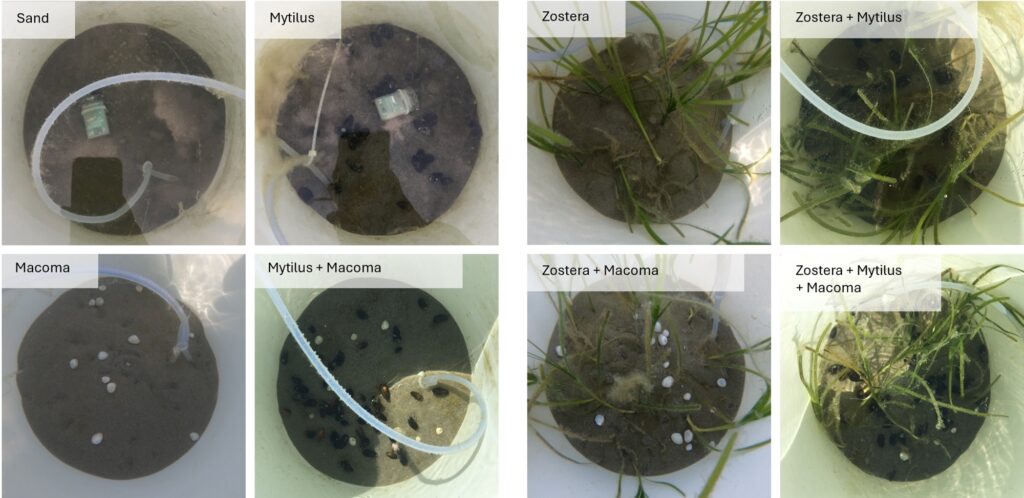
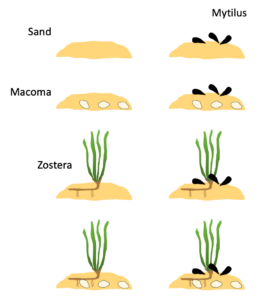
We conducted a mesocosm experiment to assess the independent and combined impact of ecosystem engineers (Mytilus trossulus and Zostera marina) and the presence of the non-indigenous Harris mudcrab (Rhithropanopeus harrisii) under simulated marine heatwaves, on the performance of the three species as well as the recruitment of invertebrates in soft sediments in the Archipelago Sea.
The experiment was conducted between July 1st – September 30th 2022 and utilized 16 tanks, which functioned as water baths, with each mesocosm containing 6 experimental subunits.
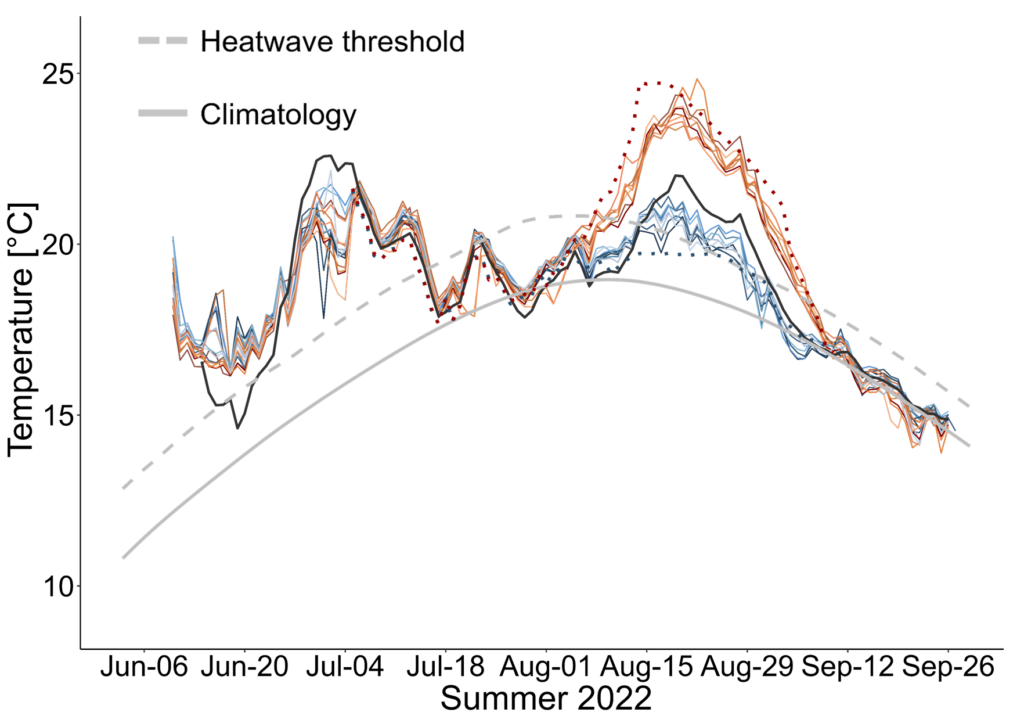
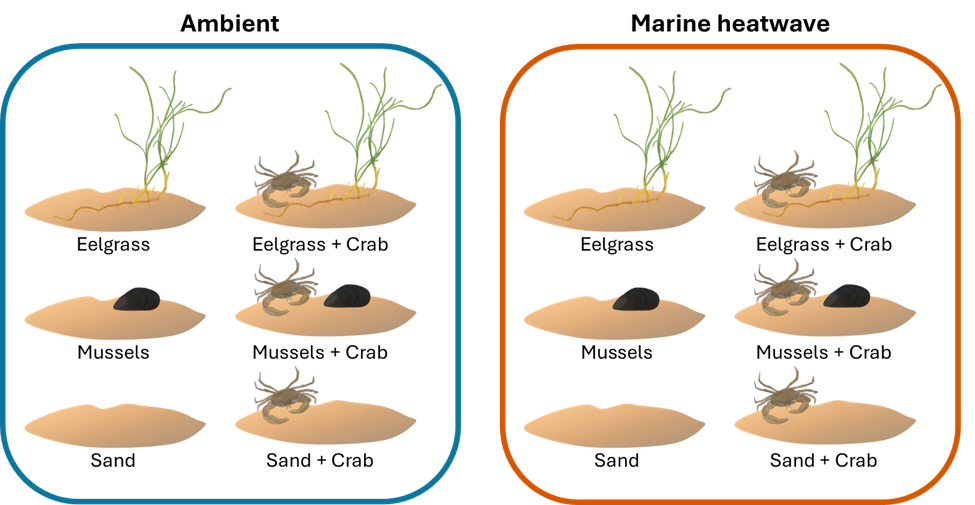
We ran a mesocosm experiment using the non-indigenous mud crab Rhithropanopeus harrisii, which has entered the underwater environments of the Åland Islands in recent years. Our research aimed to explore the significance of food preferences under the stress from increasing water temperatures to identify potential shifts in ecological dynamics. The mud crab was offered various combinations of local benthic prey species, including Gammarus spp., Mytilus trossulus, and Theodoxus fluviatilis, to observe their performance functions (survival) as well as their predator-prey interactions (feeding rates) under changing thermal conditions, from 12 to 40°C, for 8 days.
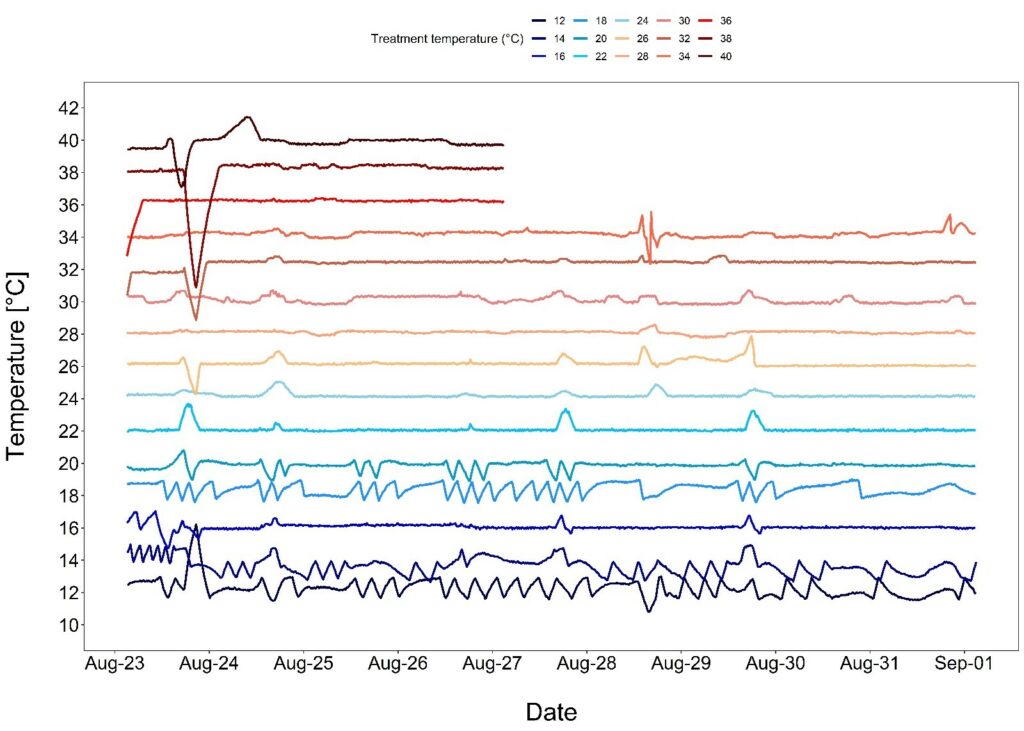
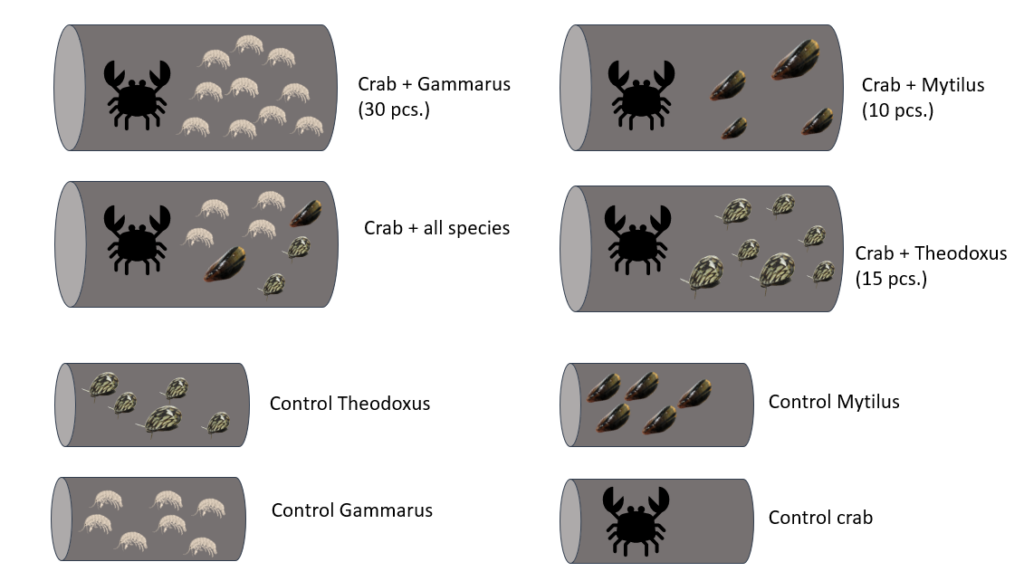
Archipelagic highly dynamic environmental (temperature) gradients challenge organisms to adapt and survive, as they have to cope with rapid changes over multiple temporal scales. Importantly, it is unknown how the environmental background can shape the response of seagrass to heat stress and if seagrass living in high-variability environments (more stress), can adapt better towards heat stress than sheltered seagrass (environment more constant). The predominantly monospecific, but presumably phenotypically diverse seagrass meadows in the Archipelago Sea, therefore, provide an ideal model system to test this concept.
Through the simulation of thermal gradients in mesocosm settings, this project (a) quantifies phenotypic traits of selected seagrass populations across and within seagrass clones, (b) assesses their potential for adaptation to environmental change on heat resistance, and (c) correlates population origin with heat tolerance and distinct ecological functions (e.g. nutrient uptake, sediment stabilisation).
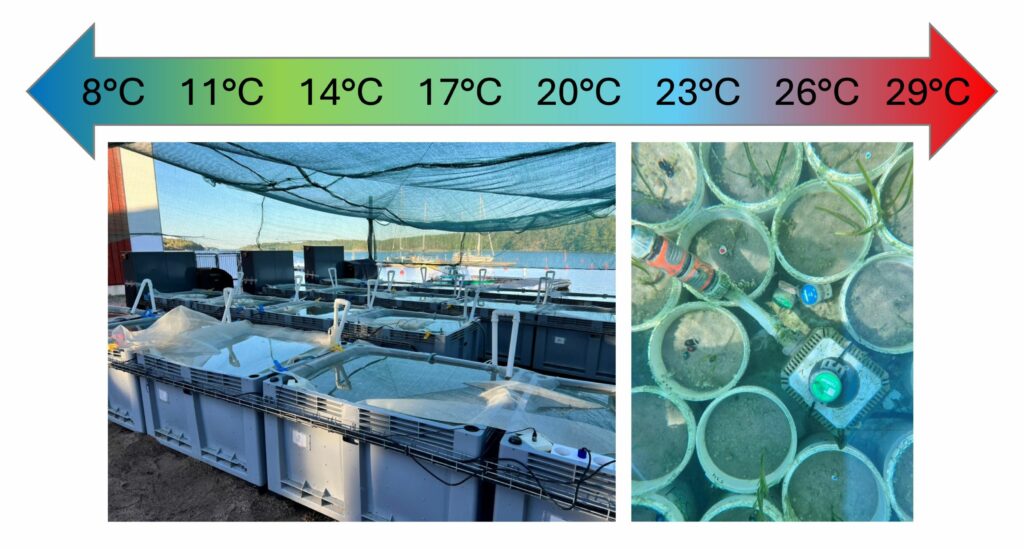
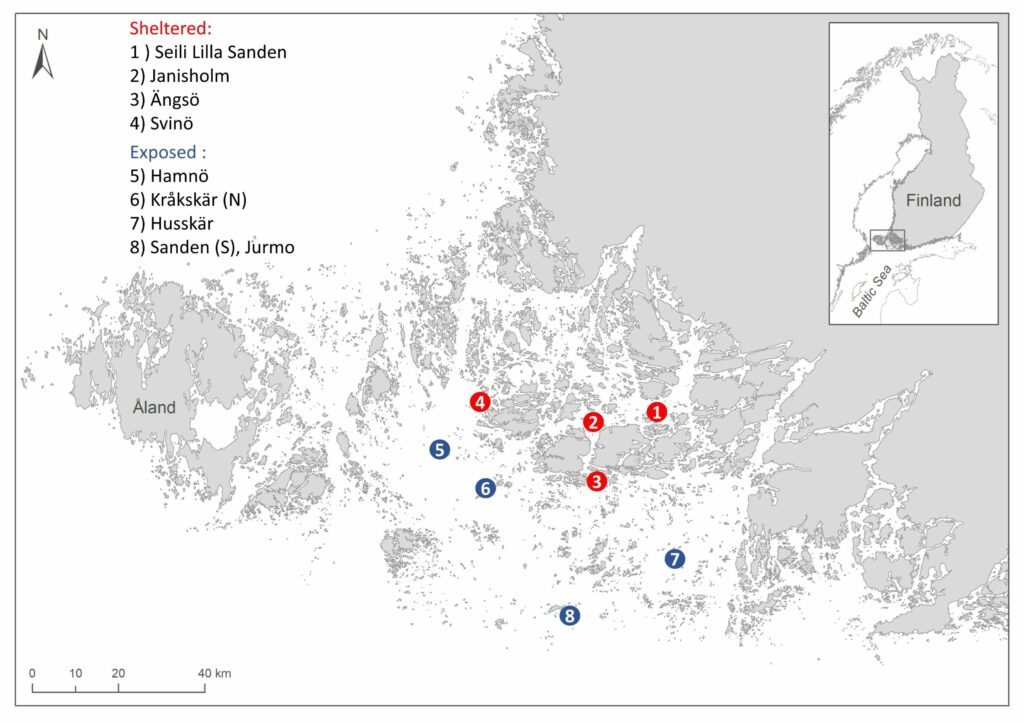
In 2025 and 2026, we will accommodate The Research Council of Norway (Forskningsrädet) funded project NORSE – Biodiversity in Northern European Seagrass meadows – drivers, responses, and resilience. In this framework, we will run cross-regional comparative mesocosm studies on the resilience of Zostera marina seagrass meadows to climate change.
Invitations to join this large-scale effort will be announced soon!